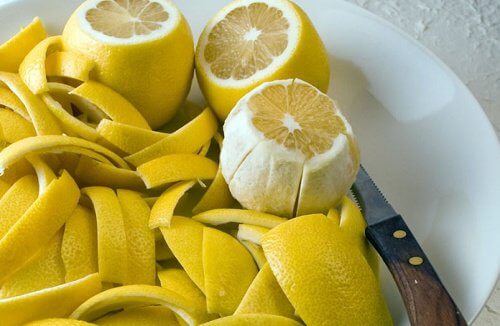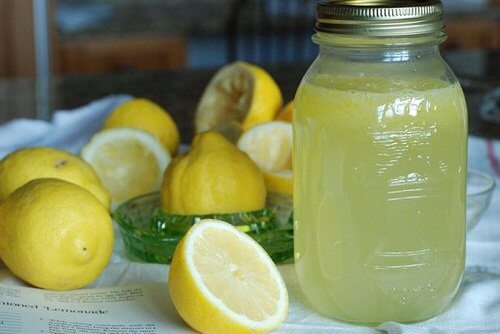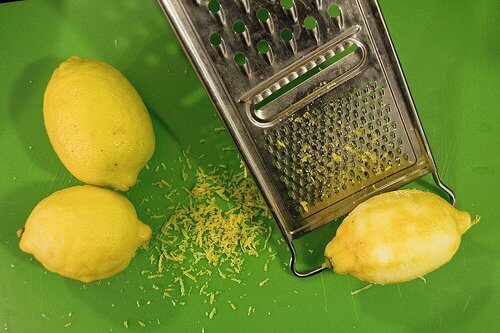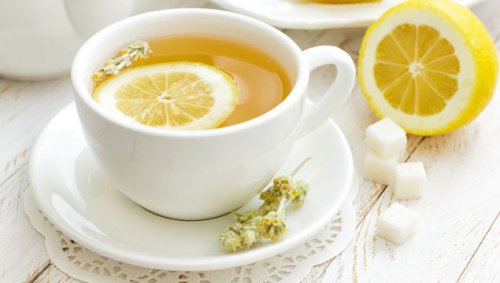Learn to Cure Joint Pain with Lemon Peel


Reviewed and approved by the doctor José Gerardo Rosciano Paganelli
Lemons have become an indispensable fruit in the modern diet, not just because they’re versatile and delicious, but also because they’ve also been shown to be very beneficial to health. Their high content of vitamin C, combined with a number of other antioxidants and nutrients, make lemons a great way to prevent disease and fight health problems like the flu, the common cold, laryngitis, bacterial infections, high blood pressure, problems with digestion, skin issues. However, other research has also shown that it can be a very effective way to cure joint pain.
Some of the benefits of lemons are due to their high content of vitamins C, A, B1, and B6, as well as magnesium, bioflavonoids, pectin, folic acid, phosphorus, calcium, and potassium. Other nutrients help strengthen the immune system, protect the stomach and liver, and, in addition, slow premature aging of the skin caused by free radicals.
See also: How to Take Care of Your Liver with 5 Natural Remedies
Why is lemon peel specifically useful to cure joint pain?

The lemon peel contains important nutrients like lemon oil, citronella, and phellandrene, in addition to vitamin C, citric acid, malic acid, formic acid, hesperidin and pectins, and more.
Lemon peel has some powerful qualities and is a strong antiseptic that can help fight fever. In fact, the essential oils found in lemon peel have been shown to reduce joint pain, by relaxing the blood vessels and producing an anti-inflammatory effect that significantly reduces painful sensations.
How to cure joint pain with lemon peel

- Extra virgin olive oil
- 2 large organic lemons
- Eucalyptus leaves
- A small jar with lid
- Clean gauze
Preparation
- First place the lemon peels in a jar and add enough olive oil to cover them completely. Then add the eucalyptus leaves. After that, close the jar tightly and let this mixture sit for two weeks.
- After two weeks have passed, add a little of this remedy to some gauze and place it over the painful area. Ideally you should apply this treatment at night, so that the ointment can soak into the skin while you sleep.
Tea made with lemon peel

Ingredients
- 1 liter of water
- 2 lemon peels, and the juice
- Honey (optional)
Preparation
First pour the water into a pot and add the lemon peel. Then bring to a boil for 15 minutes. Finally, remove them from heat and add the lemon juice and honey.
Benefits of tea made with lemon peel
- Relieves pain in leg and arm joints
- Reduces inflammation and gas
- Is a natural detox agent
- Helps regulate the pH of the blood
- Strengthens the immune system and prevents disease
- Lowers blood pressure
- Improves skin health, by fighting excess oil
- Fights bad breath
- Is relaxing
- And, finally, it can relieve tension and headaches
All cited sources were thoroughly reviewed by our team to ensure their quality, reliability, currency, and validity. The bibliography of this article was considered reliable and of academic or scientific accuracy.
- Basu A, Schell J, Scofield RH. Dietary fruits and arthritis. In: Food and Function. 2018.
- Oikeh EI, Omoregie ES, Oviasogie FE, Oriakhi K. Phytochemical, antimicrobial, and antioxidant activities of different citrus juice concentrates. Food Sci Nutr. 2016;
- Kummer R, Fachini-Queiroz FC, Estevão-Silva CF, Grespan R, Silva EL, Bersani-Amado CA, et al. Evaluation of anti-inflammatory activity of citrus latifolia Tanaka essential oil and limonene in experimental mouse models. Evidence-based Complement Altern Med. 2013;
This text is provided for informational purposes only and does not replace consultation with a professional. If in doubt, consult your specialist.








